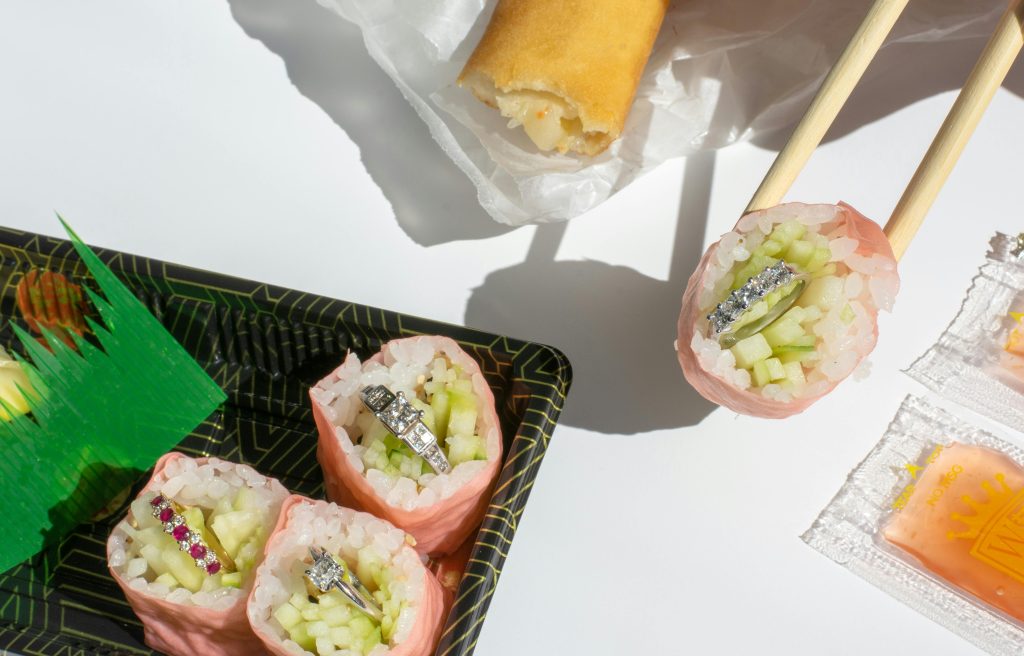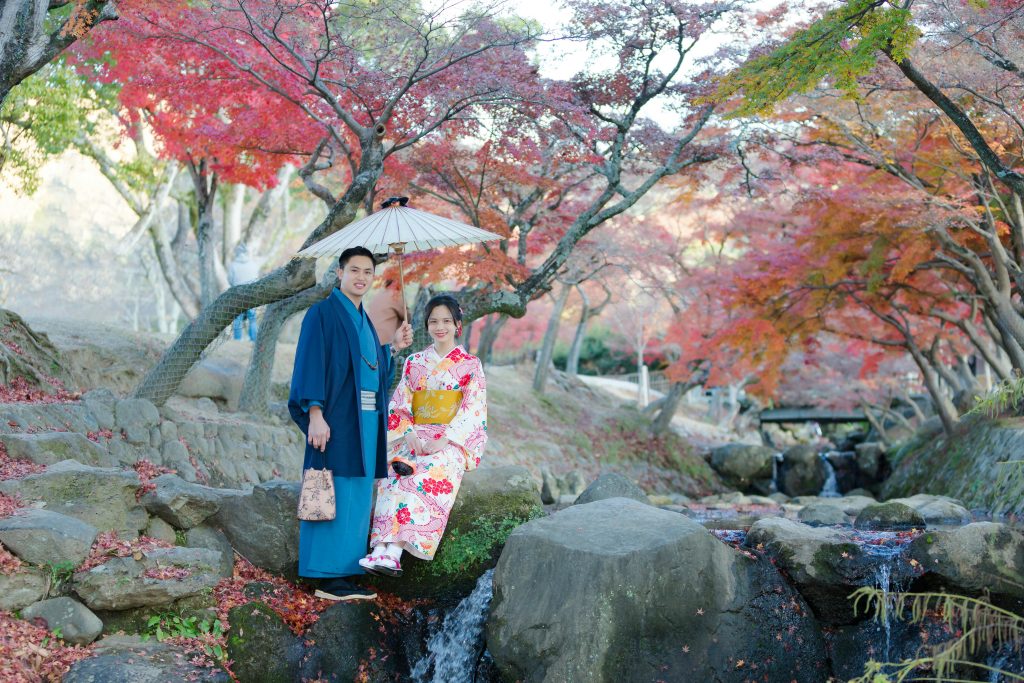Although modern Japanese weddings these days are heavily influenced by Western culture, traditional cultural elements still influence current wedding traditions. Due to the influence of popular culture, many Japanese couples preferrer celebrating Christian-style weddings. Shinto weddings, which celebrate the religion native to Japan, account for only about twenty percent of all weddings. In this article we’ll explore some Japanese wedding traditions. Maybe you’ll be able to include some in your own wedding!

What is the Japanese Engagement Ceremony?
The ‘yuinou,’ or betrothal ceremony is a custom between the family of the bride and groom. For this ceremony the couple will exchange little symbolic gifts like a long cord of white hemp. This tradition symbolizes the couple getting old and growing gray hair together. A special envelope called shugi-bukuro contains a large sum of money (sometimes up to $5,000). This along with a folding fan are popular gifts at a traditional Japanese wedding.
These days most yuinou are more casual events, celebrated at a favorite Japanese restaurant. Many brides still choose to wear the furisomo, a kimono specifically for unmarried women.
How Are Japanese Wedding Dates Chosen?
The rokuyo is the Japanese lunisolar calendar used to find an auspicious date for the wedding. Dates that are considered “lucky” are often in very high demand and cost an extra arm and a leg. For non-superstitious couples this comes at an advantage, as days that are seen as “unlucky” are offered at a nice discount by many venues.
How is the Sake Ceremony Used in Japanese Weddings?
The Sake sharing ceremony comes from the Shinto culture in Japan and is claimed to have originated at the emperor’s wedding 120 years ago. At this ceremony, a sacred cup of sake is shared between the couple and their family. Sharing this drink symbolizes a strong bond between the family of the bride and the groom.
For religious couples a Shinto Shrine is central to the wedding ceremony space. After the priest offers a sacrifice to the gods, a prayer for protection and blessings on the marriage is performed before the shrine. A “wedding before the kami” as shrine weddings are sometimes referred to, is where the couple asks for special protection and good fortune from ancient Japanese gods such as Izagami and Izanagi.

What is a Traditional Japanese Couple’s Wedding Attire?
Wedding attire at traditional shinto weddings looks very different from a modern Japanese Christian wedding. Black tuxedos and white, western style wedding dresses are quite common in Japan these days. It is also quite usual for couples to switch between many different outfit styles throughout the wedding. Especially at Shinto weddings, the bride might change her kimono five or six times.
As wedding dresses are quite expensive, it is also normal for Japanese families to rent the bride’s wedding dress(es). A “wataboshi” is the Japanese version of the bridal veil and looks quite similar to a Catholic bishop’s mitre.

What are some Do’s and Don’ts for Japanese Weddings?
If you are planning to attend a Japanese wedding, make sure you are wearing socks in your shoes. It’s seen as disrespectful act to the gods to not be wearing socks. You may also be expected to wear one piece outfits as a two piece represents separateness, and could foreshadow bad luck or divorce for the couple. Also, it’s a traditional requirement to wear clothes that aren’t made from animal products or leather. Sometimes even loose jewelry is not allowed as this can symbolize instability.
Can I Officiate a Japanese-American Wedding?
Maybe you are interested in officiating a traditional Japanese wedding, or maybe you have Japanese friends that would like you to officiate their wedding. Luckily it’s quite simple these days to get ordained online and become an officially recognized priest. As long as you are at least eighteen years old, you can get ordained online for free with a number of online organizations by just filling out a simple form that only takes a couple minutes to complete. We highly suggest getting ordained with American Marriage Ministries. Once ordained, you’ll have access to a library of information to help you learn all the aspects of wedding from writing your speech to filling out the marriage license.
-Bernard Paul